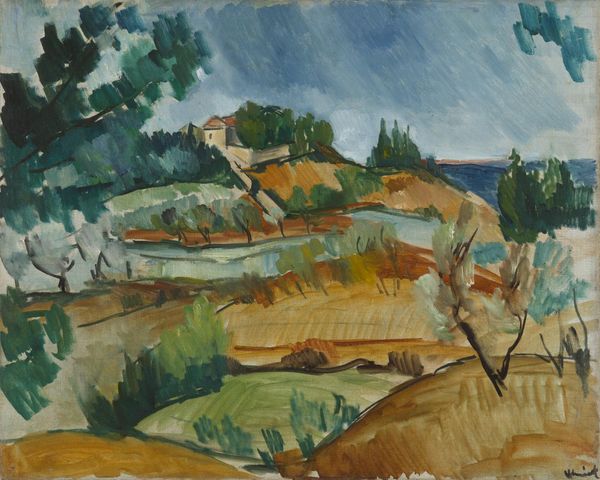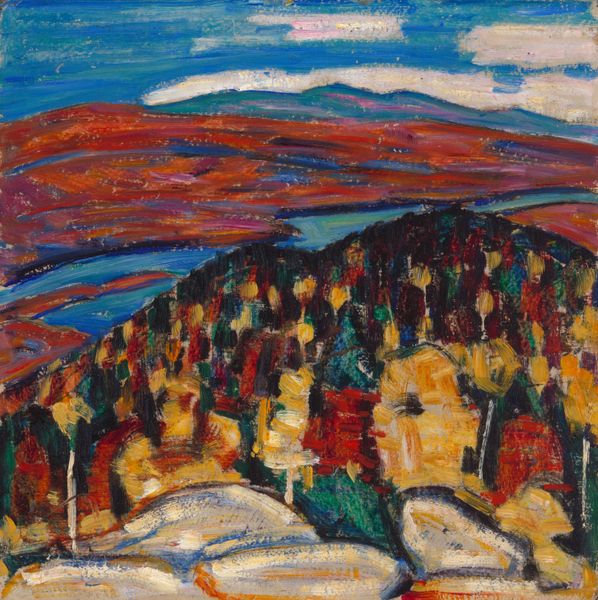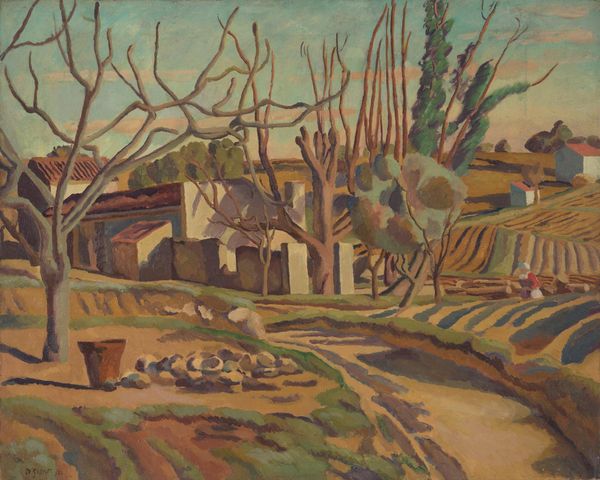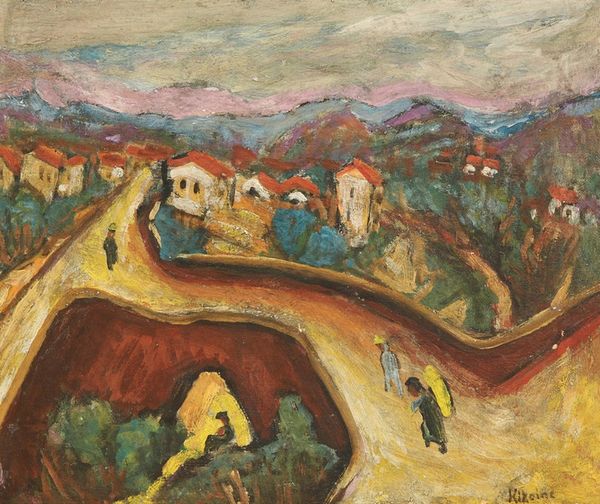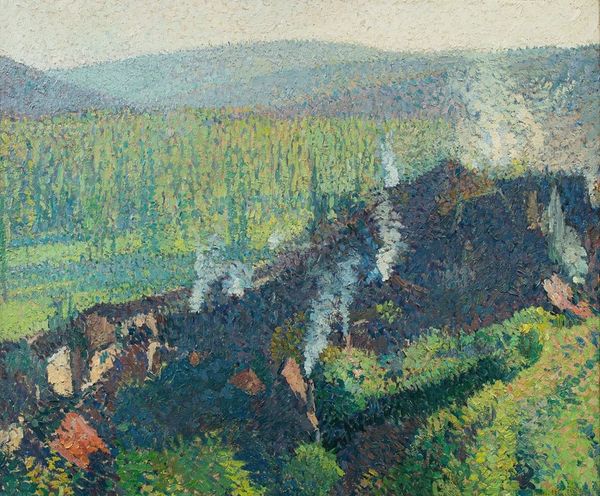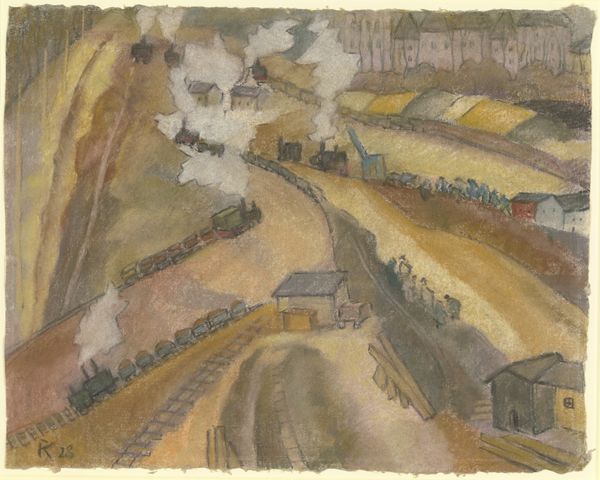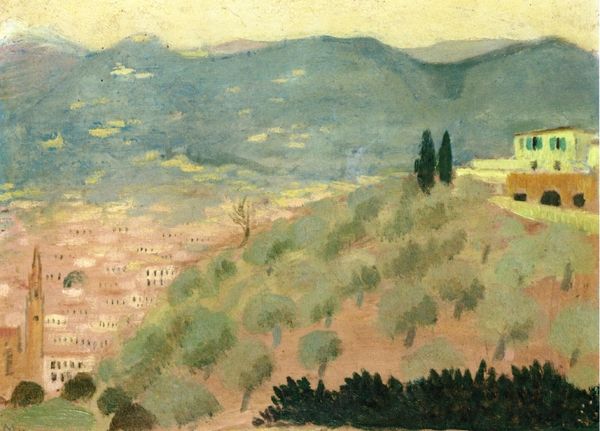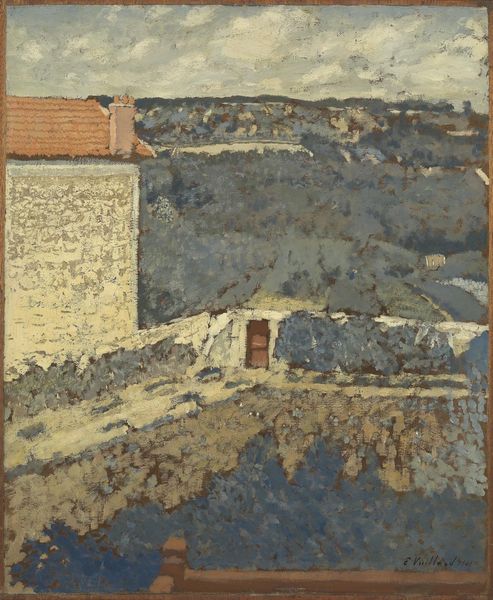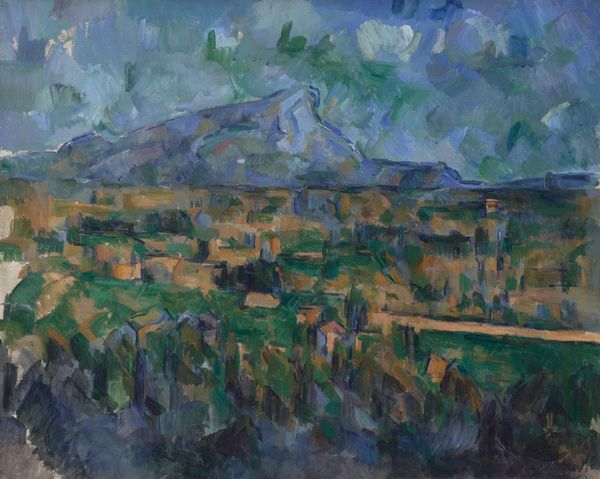
painting, oil-paint
#
painting
#
oil-paint
#
landscape
#
oil painting
#
modernism
#
realism
Copyright: Spyros Papaloukas,Fair Use
Curator: Let’s turn our attention to “Burnt Village in Mytilini,” a landscape painting executed in oil on canvas by Spyros Papaloukas in 1925. What strikes you first? Editor: There’s an immediate tension. The muted ochres and umbers dominate, creating a rather somber atmosphere. But those vivid green patches interspersed below suggest a tenacious, perhaps painful, regeneration. Curator: It's important to consider this work within the context of the Greco-Turkish War and its aftermath. The forced population exchanges deeply scarred the region. Mytilini, on the island of Lesbos, experienced tremendous upheaval. Editor: So, the title isn't merely descriptive, it points towards that social reality—the material devastation experienced by a community and the labour involved in rebuilding. Can we see evidence of that labor, or maybe resilience, in his brushstrokes or his handling of paint? Curator: I see a modernist embrace of realism, conveying something beyond a picturesque scene. Papaloukas wasn't just documenting a village, but suggesting a wound. There’s a layering of history and trauma etched into the land itself. Those dense strokes embody collective suffering but perhaps also an enduring sense of Greek identity? Editor: The thick application of paint certainly emphasizes a physicality—it becomes almost tactile. And consider how the composition guides our gaze. Our eyes move from those damaged buildings into this terrain that’s been worked by many hands for cultivation. The material is presented to the viewer as altered by social processes and a deep time-scale. Curator: This piece prompts essential conversations about how art can bear witness to sociopolitical turmoil and its lasting impacts on lived experiences. This view doesn’t offer simple resolution, it instead demands that we grapple with complex histories. Editor: It's also crucial to consider Papaloukas' material choices: oil paint, canvas—relatively accessible materials that also possess durability. He's not using precious metals; instead he turns towards something more closely associated with craft than purely “high art”. Curator: Exactly. I walk away thinking about memory, both personal and collective, and the roles visual language plays in shaping, solidifying, even challenging narratives surrounding displacement and conflict. Editor: And I think about the artist's own labor, connecting it to the depicted labor of the inhabitants and to the social forces embedded within a painted surface, all interacting. A truly affecting work.
Comments
No comments
Be the first to comment and join the conversation on the ultimate creative platform.

